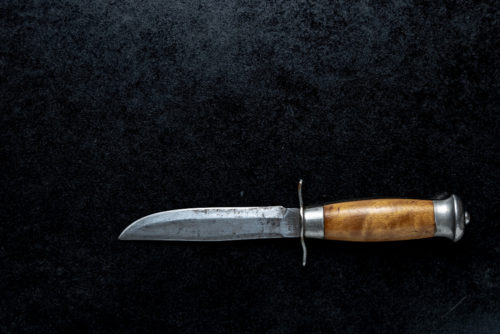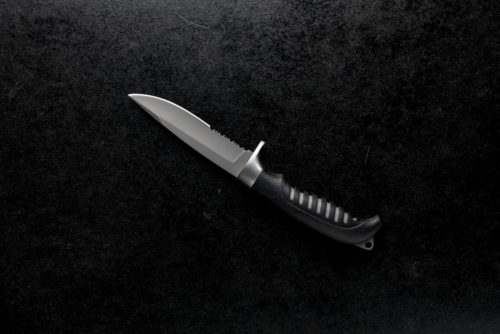As a kitchen hobbyist, you might often wonder, ‘what angle should a Japanese knife be sharpened?’ This question is more than just a technical detail; it touches upon the centuries-old tradition and craftsmanship rooted in Japanese culture. Sharpening a Japanese knife correctly can significantly enhance its performance and longevity. To achieve the precision these knives are known for, understanding the proper angle is crucial. In this detailed guide, we will delve into everything you need to know about the tremendous technology and techniques behind sharpening Japanese knives.

Why Is the Sharpening Angle Important?
The importance of the sharpening angle cannot be overstated. The angle at which you sharpen your knife plays a pivotal role in determining its sharpness, durability, and ease of use. Most Japanese knives have a smaller angle compared to Western knives, usually around 15 degrees, allowing for a razor-sharp edge. This big difference in angle is what gives Japanese knives their unparalleled precision and cutting prowess.

Understanding the Typical Angles for Japanese Knives
Single-Beveled and Double-Beveled Knives
Japanese knives often come in two styles: single-beveled and double-beveled. Single-beveled knives, typically sharpened at a 15-degree angle, are known for their tremendous precision and are often used in professional settings. Double-beveled knives, on the other hand, are more versatile and can be sharpened at angles between 15-20 degrees on each side.
The 15-Degree AngleA Standard for Japanese Knives
The 15-degree angle is the most common for Japanese knives. This angle provides terrific sharpness and allows for precise and clean cuts. Whether you’re slicing sashimi or chopping vegetables, maintaining a 15-degree angle will ensure your knife performs optimally.

Tools Needed for Sharpening Japanese Knives
Whetstones
Whetstones are the most traditional and effective tools for sharpening Japanese knives. They come in various grits, from coarse to fine, allowing for big versatility. For a standard sharpening process, you might start with a 1000-grit stone and finish with a 6000-grit stone.
Sharpening Guides
For those new to knife sharpening, using a sharpening guide can help maintain the correct angle. These guides are placed on the spine of the knife and ensure you hold the blade at the proper angle throughout the sharpening process.

Step-by-Step Guide to Sharpening Your Japanese Knife
Preparation
Before you start, soak your whetstone in water for around 15 minutes. Make sure your working area is clean and well-lit. Also, keep a towel nearby to wipe off any debris from the blade.
Setting the Angle
Hold the knife at approximately a 15-degree angle. If you’re using a sharpening guide, this step will be much easier. For those without a guide, this angle is about the height of a stacked dime.
Sharpening Process
Place the blade on the whetstone and, maintaining the 15-degree angle, slide it across the stone with gentle pressure. Repeat this motion about 10-15 times on each side of the blade. Start with the coarse grit and gradually move to finer grits.
Honing and Polishing
After you’ve sharpened both sides, use a honing rod to fine-tune the edge. Finally, polish the blade with a leather strop to achieve a razor-sharp finish.
Maintenance Tips for Your Japanese Knife
Regular Honing
To keep your knife in top shape, hone it regularly. This helps maintain the edge and prolongs the time between full sharpenings.
Proper Storage
Store your knife in a knife block or on a magnetic strip to prevent the edge from dulling. Avoid tossing it into a drawer, as this can cause nicks and chips on the blade.
Common Mistakes to Avoid
Even seasoned kitchen enthusiasts can make mistakes when sharpening their knives. Here are some common pitfalls:
- Incorrect Angle: Holding the knife at the wrong angle can result in a dull edge.
- Too Much Pressure: Pressing too hard can damage the edge and the stone.
- Inconsistent Strokes: Uneven pressure and inconsistent strokes can lead to an uneven edge.
Benefits of a Well-Sharpened Japanese Knife
A well-sharpened Japanese knife offers numerous benefits, enhancing both your cooking experience and the quality of your meals. Here are some of the key advantages:
- Precision: A sharp knife allows for finer, more accurate cuts.
- Safety: A sharp blade is less likely to slip and cause accidents.
- Efficiency: Cutting tasks become quicker and require less effort.
- Longevity: Proper sharpening can extend the life of your knife.
Conclusion: Mastering the Art of Japanese Knife Sharpening
Sharpening a Japanese knife at the correct angle is an art that requires patience and precision. By understanding the importance of the angle, using the right tools, and following proper techniques, you can keep your knife in pristine condition. This guide has provided a comprehensive overview to help you achieve that perfect edge. Remember, the key to a great knife is consistent care and attention.
For more details on knife sharpening, check out this informative guide on the different types of kitchen knives and their uses. You can also find more resources on
FAQ Section
What is the best angle for sharpening a Japanese knife?
Typically, a 15-degree angle is ideal for sharpening most Japanese knives, as it offers a perfect balance between sharpness and durability.
Can I use a regular whetstone for sharpening Japanese knives?
Yes, you can use regular whetstones for sharpening Japanese knives. Ensure you choose the right grit and soak the stone in water before use.
How often should I sharpen my Japanese knife?
The frequency of sharpening depends on how often you use the knife. Regular honing can reduce the need for frequent sharpening. Generally, a well-maintained knife may only need sharpening a few times a year.
As an Amazon Associate, I earn from qualifying purchases.


